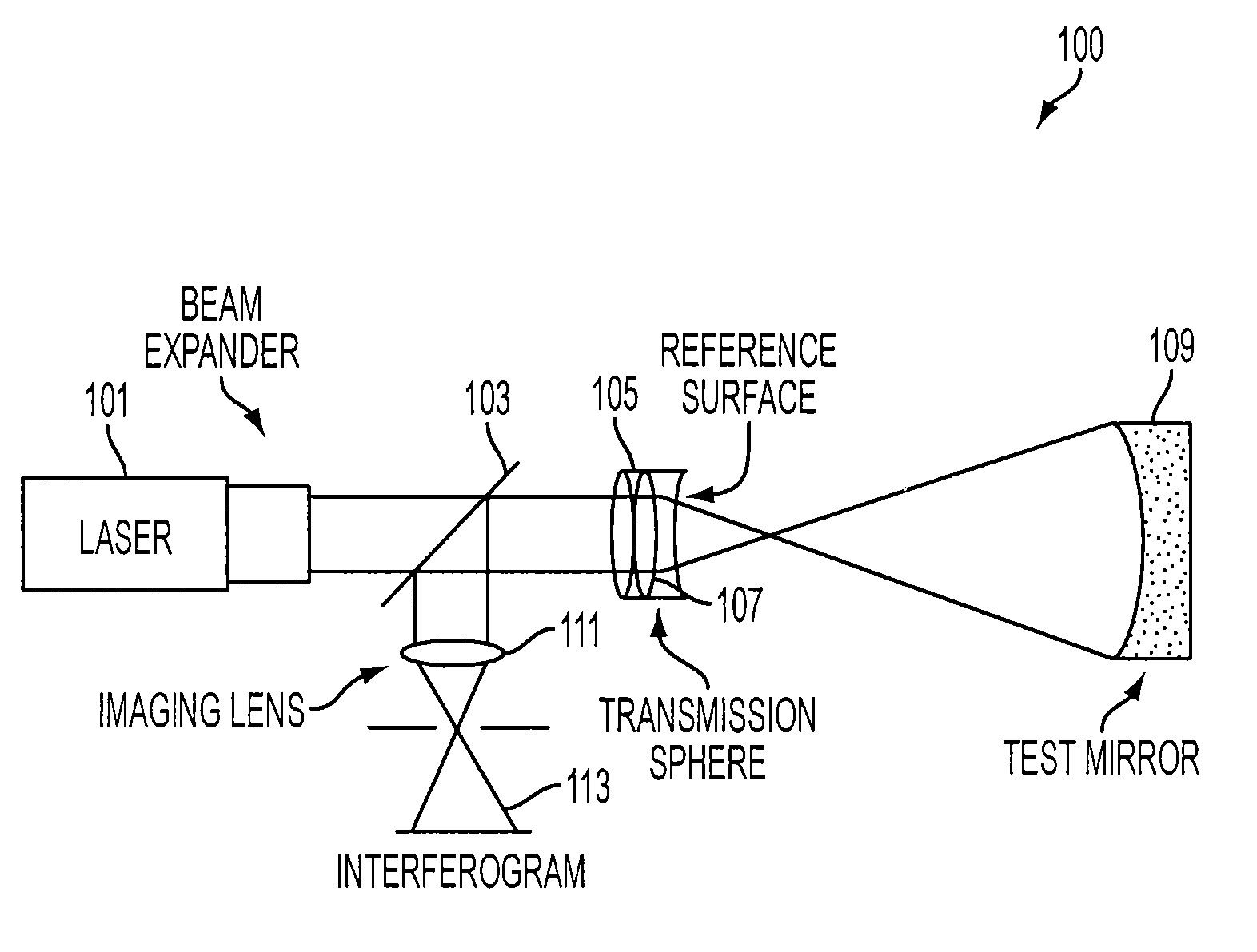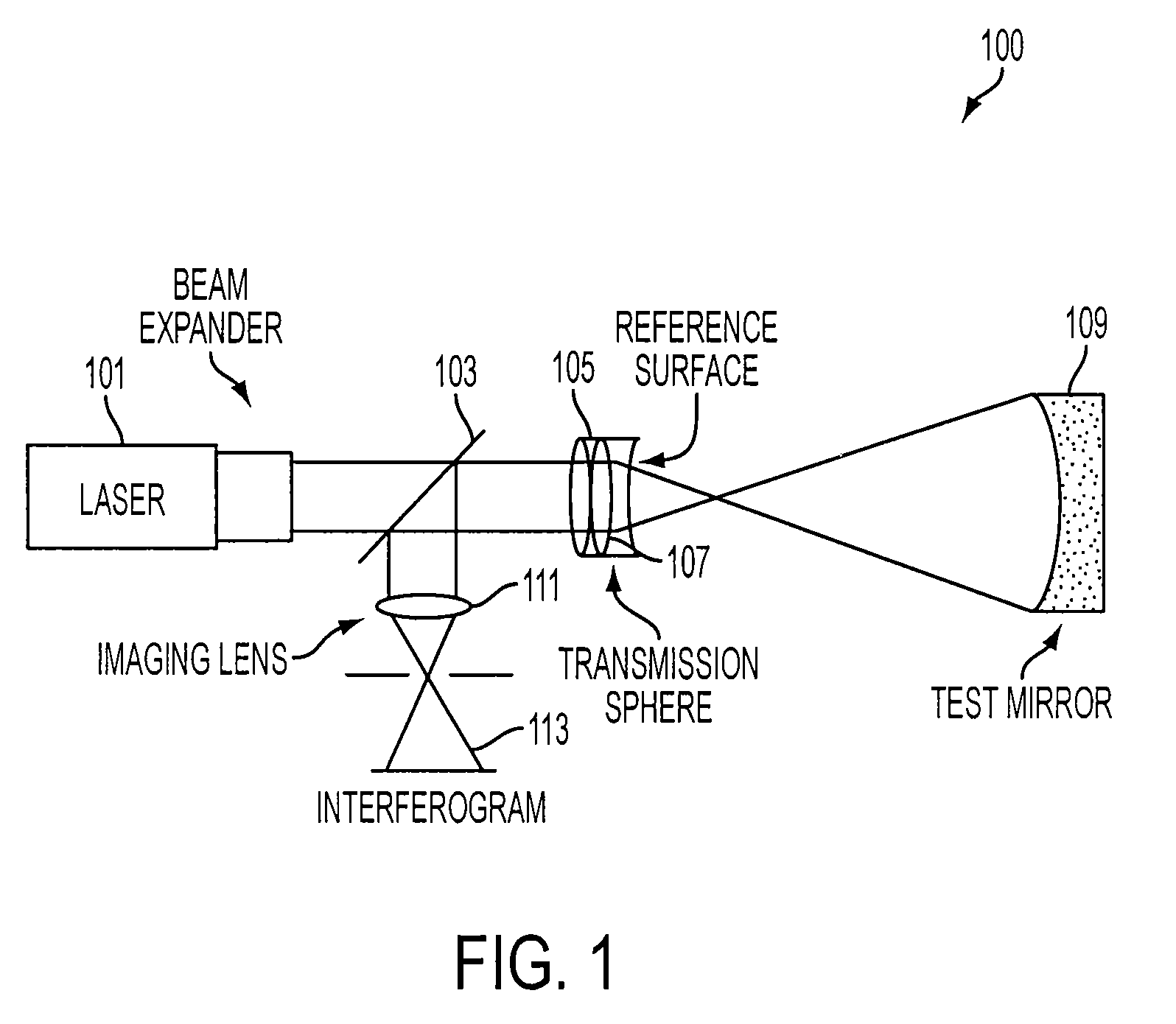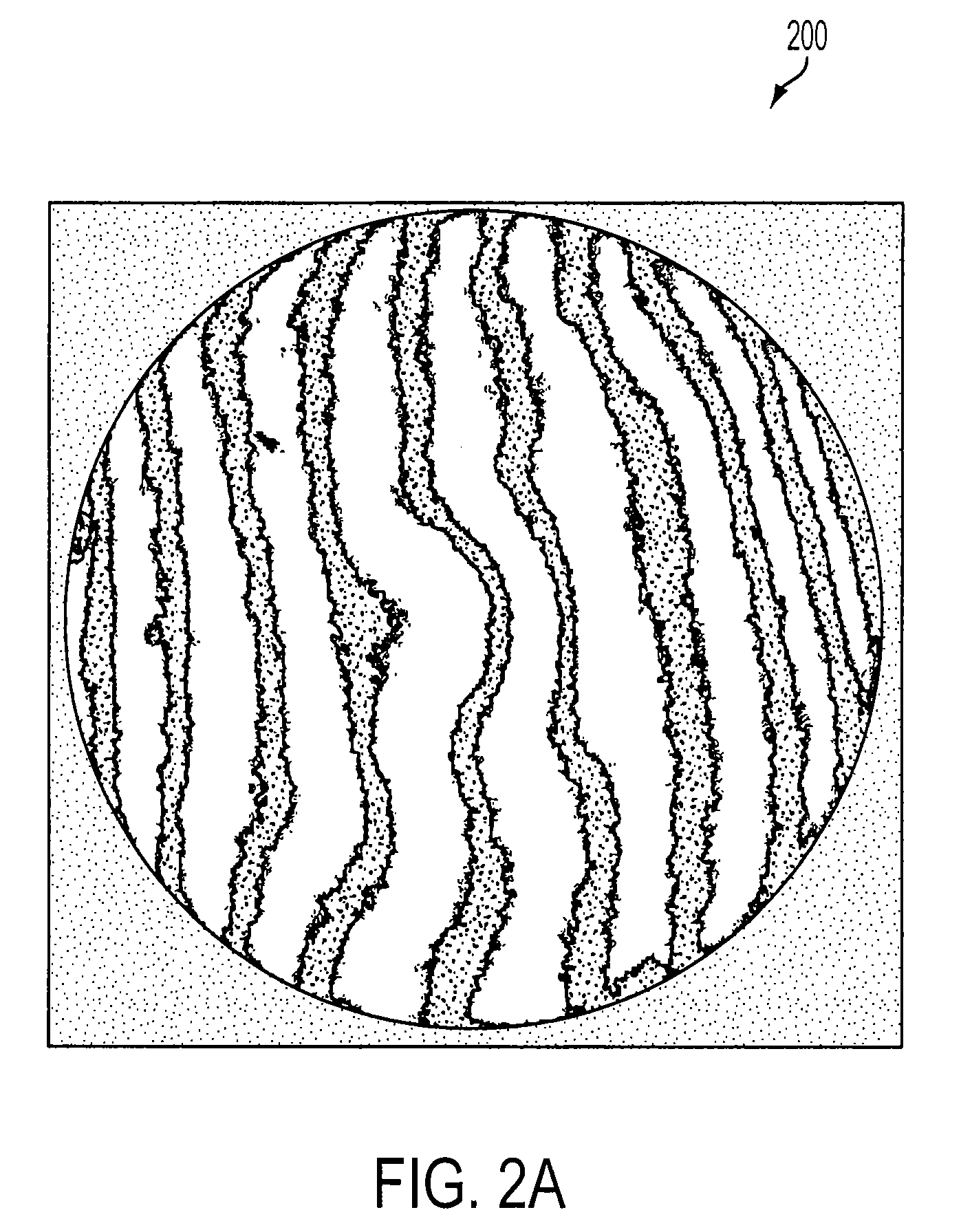Diffractive null corrector employing a spatial light modulator
a spatial light modulator and null corrector technology, applied in the field of lithography, can solve the problems of high manufacturing cost, limited accuracy and the types of aspheric surfaces that can be tested by null correctors, and the non-recurring cost associated with null correctors adds significantly to the cost and delivery schedule of optical elements that are analyzed by null correctors, so as to reduce the cost of fabrication
- Summary
- Abstract
- Description
- Claims
- Application Information
AI Technical Summary
Benefits of technology
Problems solved by technology
Method used
Image
Examples
Embodiment Construction
I. Introduction
[0030]A. Overview
[0031]Embodiments of the present invention are directed to a diffractive null corrector employing an SLM and a method for using such a diffractive null corrector. An example diffractive null corrector in accordance with an embodiment of the present invention is used to test an aspheric optical surface. In this embodiment, an interferometer provides a test beam of electromagnetic radiation to the SLM. The test beam is focused to have an f-number that is nominally optically conjugate to the aspheric optical surface being tested. In an embodiment, the test beam may be focused by the SLM. The test beam is first incident on the SLM. Pixels of the SLM are selectively turned ON / OFF to provide a grating pattern that generates a wavefront shape resulting in a null test of the aspheric optical surface.
[0032]A null corrector changes the direction of rays that make up an input beam so each ray hits an optical surface at normal incidence. If the optical surface is...
PUM
 Login to View More
Login to View More Abstract
Description
Claims
Application Information
 Login to View More
Login to View More - R&D
- Intellectual Property
- Life Sciences
- Materials
- Tech Scout
- Unparalleled Data Quality
- Higher Quality Content
- 60% Fewer Hallucinations
Browse by: Latest US Patents, China's latest patents, Technical Efficacy Thesaurus, Application Domain, Technology Topic, Popular Technical Reports.
© 2025 PatSnap. All rights reserved.Legal|Privacy policy|Modern Slavery Act Transparency Statement|Sitemap|About US| Contact US: help@patsnap.com



